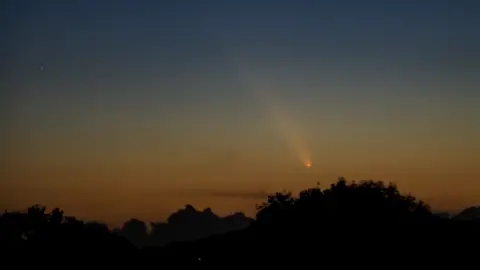The demo tapes are understood to be versions of several songs by the rock icon, who died in 1970 aged just 27.
Bethany Minelle
Arts and entertainment reporter @BethanyMinelle
Sunday 13 October 2024
Sky News

Never-before-heard tapes from Jimi Hendrix will be sold at auction next month - 54 years after the rock star's death.
The 1968 demos are understood to be versions of Up From The Skies, Ain't No Telling, Little Miss Lover and Stone Free, and run for around seven minutes
Each one is expected to make hundreds of thousands of pounds.
 Image:Pic: Propstore
Image:Pic: PropstoreEntertainment auctioneer Propstore says the sale will give fans the chance to listen to Hendrix songs that only they have access to.
The tapes were retrieved from the office of Hendrix's manager Mike Jeffrey in 1973 by his assistant Patricia "Trixie" Sullivan, who is now selling them on.
Other items up for sale include payslips for Hendrix and his band members, a handwritten form by the musician requesting his birth certificate, and various receipts that detail his personal life.
Documents range from dry-cleaning bills to tour itineraries, and reveal the off-stage dealings of the music icon.

The auctioneer's music expert Mark Hochman said he was captivated "by the depth and significance of the material".
He said: "It's an incredible collection that not only reflects the personal life of Jimi Hendrix but also transports you back to a pivotal moment in music history".
Hendrix - whose music merged rock, soul, blues and jazz - is considered by many to be the greatest guitarist in pop.
Hits including Purple Haze, Foxy Lady and All Along The Watchtower helped make him one of the most influential musicians of the 20th century.
Follow Sky News on WhatsApp
Keep up with all the latest news from the UK and around the world by following Sky NewsTap here
He died in 1970 aged just 27 after overdosing on alcohol and sleeping pills.
Master tapes from other bands managed by Jeffrey, including The Animals and Soft Machine, are also up for sale.
The auction will be held in London on Friday 15 November and will be live-streamed.










